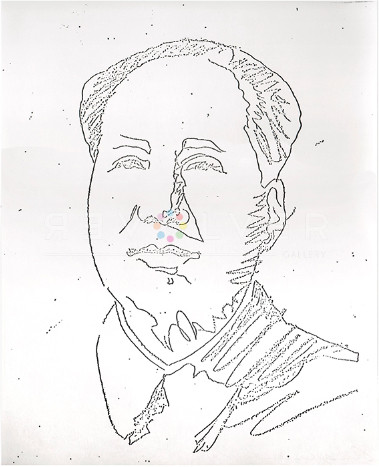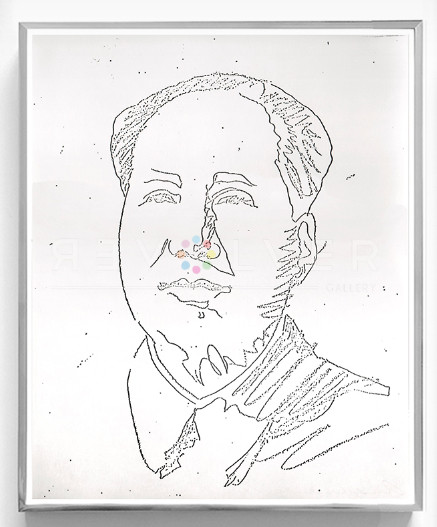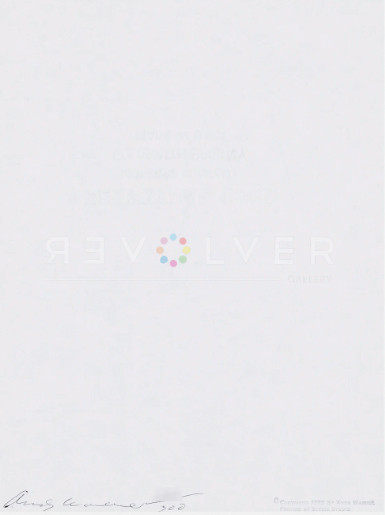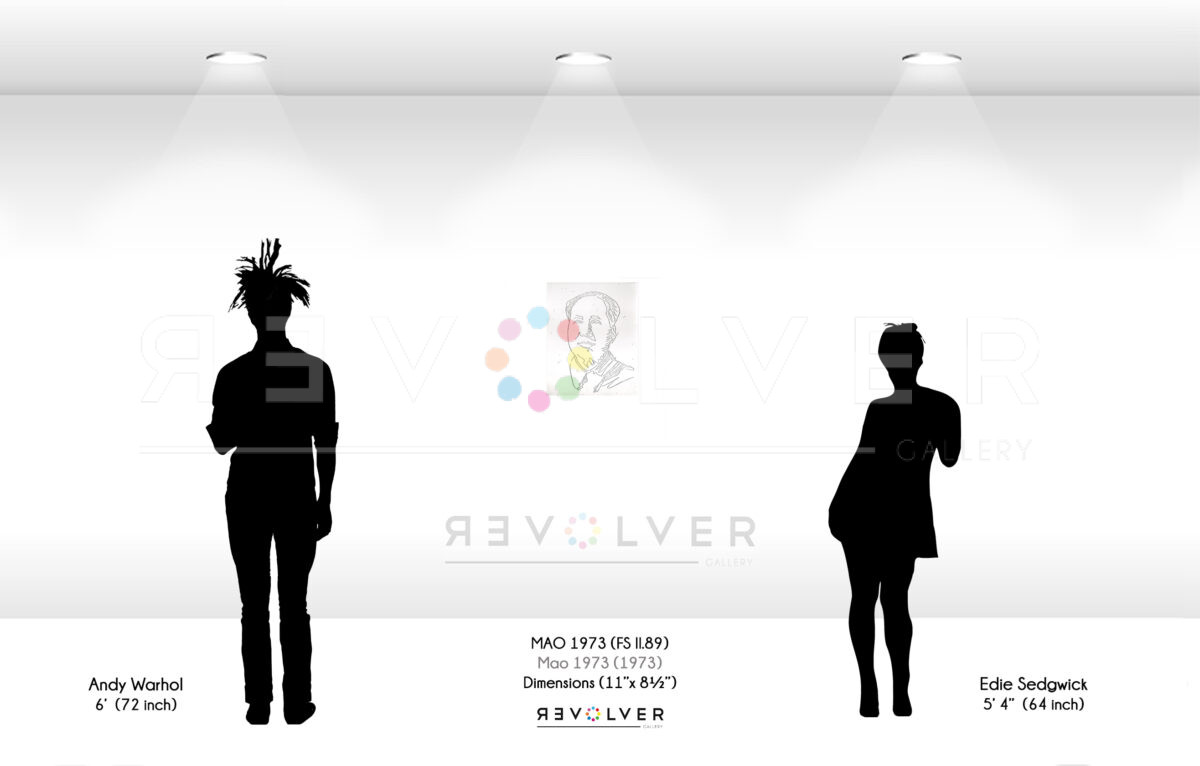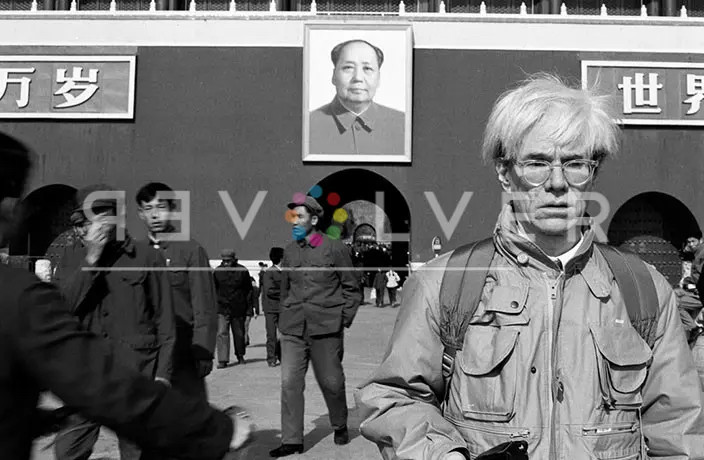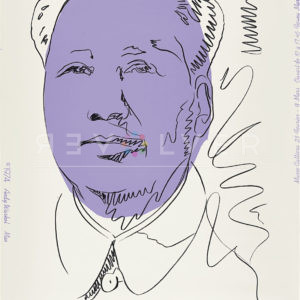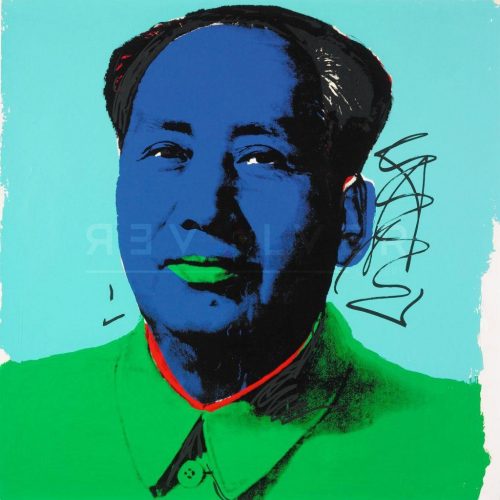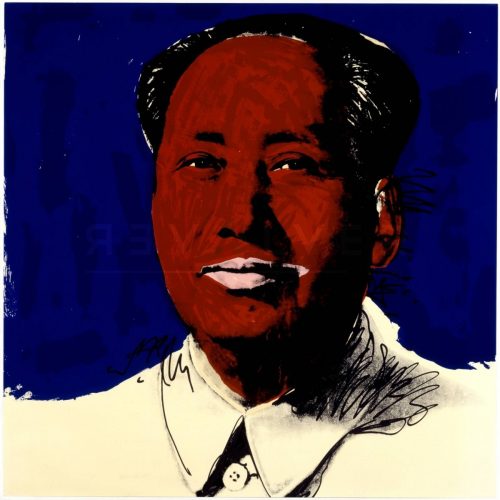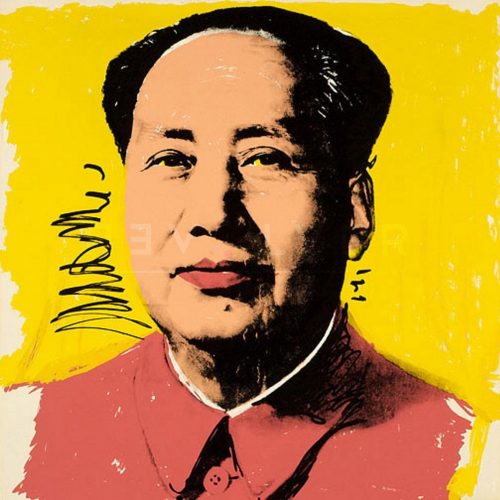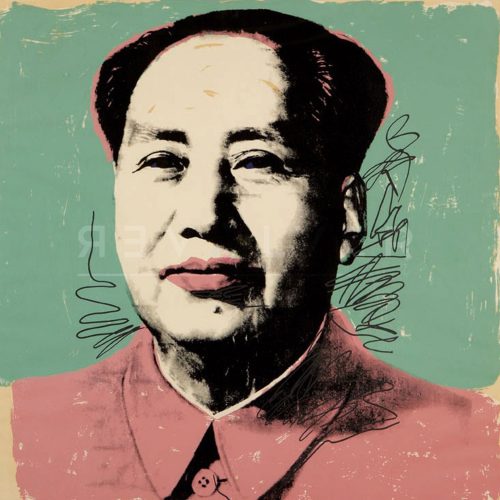Mao (FS II.89) by Andy Warhol is a Xerox print on typewriter paper that stands as a unique variant within a limited edition, part of The New York Collection for Stockholm. This 1973 piece, measuring 11 inches by 8.5 inches, is a stark black and white portrayal of Mao Zedong, a figure whose political and cultural impact was immense during the 20th century. Each print within the edition is distinctive, signed and numbered by Warhol in ballpoint pen on the verso, underscoring the personalized touch the artist brought to this series.
In this Xerox print on ordinary office paper, Warhol distills the revolutionary leader’s widely recognized portrait to its most elemental outlines. The absence of color, in contrast to the vibrant palettes of Warhol’s more famous portrayals of the leader, serves to focus the viewer’s attention on the medium itself, emphasizing the reproduction and dissemination of Mao’s likeness, akin to the way it was propagated during his leadership in China. The replication of Mao’s profile through a Xerox machine—a mundane office apparatus—contrasts sharply with the extraordinary reach of Mao’s political influence and ideological campaign. It subtly critiques the interplay between personality cults and the media, highlighting how technology can amplify political narratives.
Published as part of a portfolio to support the acquisition of works by prominent New York artists of the 1960s for the Moderna Museet in Stockholm, Sweden, this artwork aligns Warhol with peers such as Roy Lichtenstein, Richard Serra, and Robert Rauschenberg. This project, facilitated by Experiments in Art and Technology and printed by Julie Martin in New York, captures the spirit of innovation and collaboration that defined the art scene of the time.
This piece, therefore, is not just a reflection of Warhol’s fascination with celebrity and authority but also an exploration of the technological means through which images are produced and consumed. Mao (FS II.89) extends Warhol’s exploration of art and technology, questioning the role of art in mass media and the commodification of political figures. In its facile, minimalist execution on mundane materials, it critiques the complex interplay between art, politics, and the mechanisms of fame and influence in the modern world.

